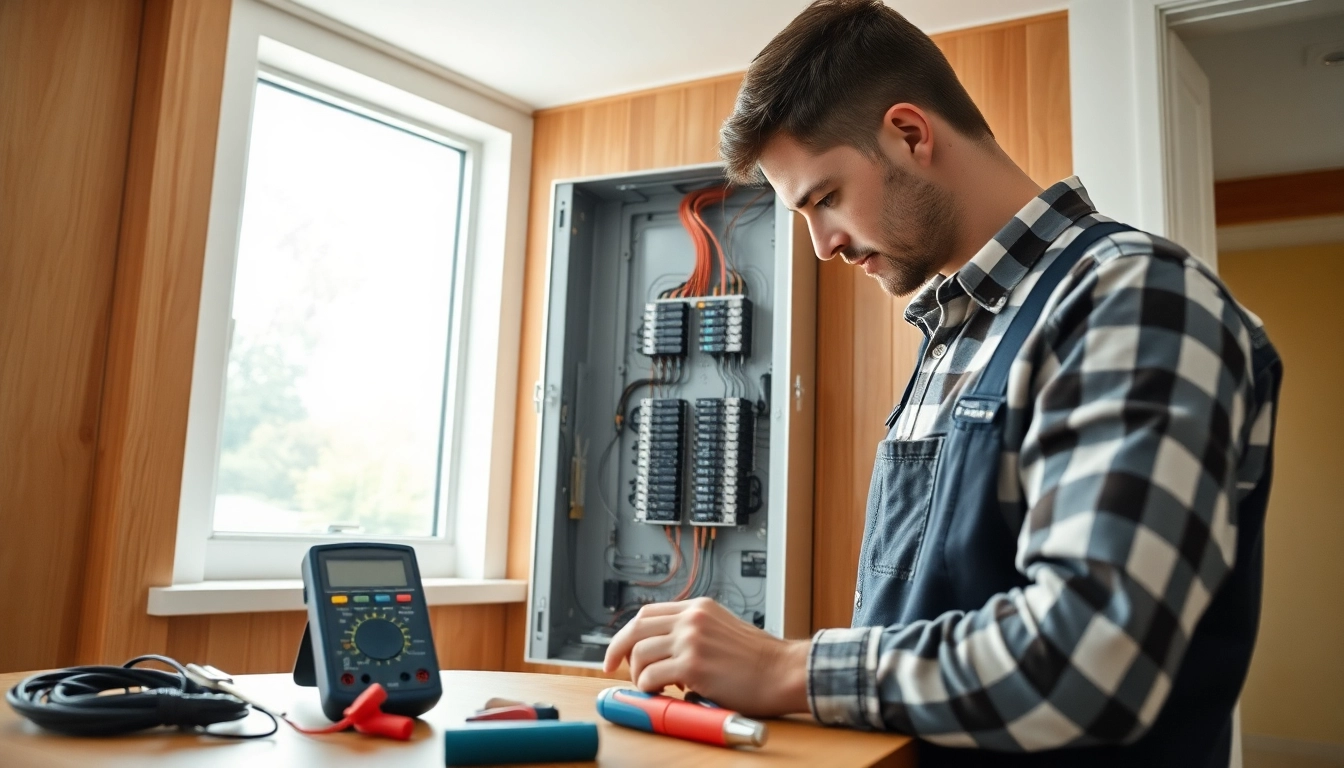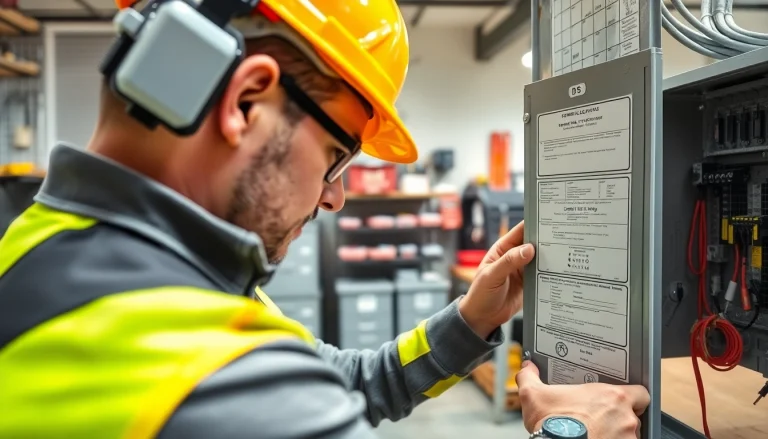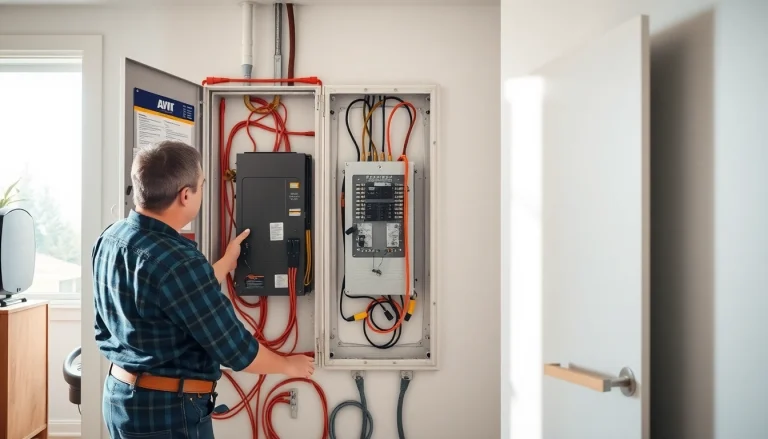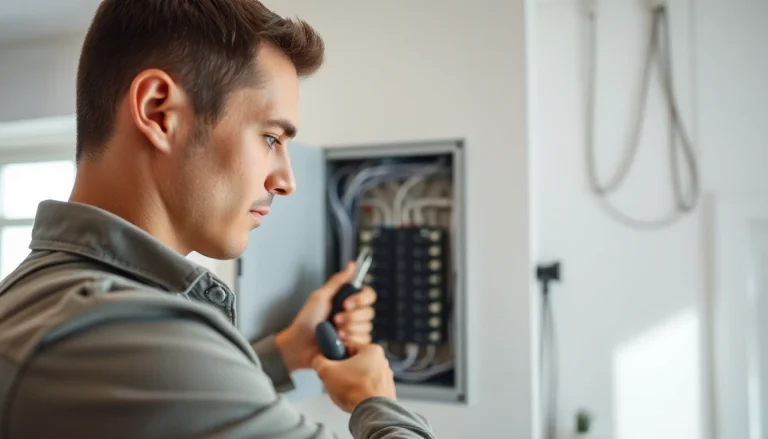Understanding the Importance of an Electrical Panel
The electrical panel is a crucial component in any home, serving as the central hub for all electrical distribution. This essential device not only keeps the lights on but also ensures that all electronic appliances function correctly. Understanding its significance can empower homeowners to make informed decisions regarding electrical safety and performance. An Electrical Panel is more than just a box; it is a lifeline that distributes electricity throughout your home safely and efficiently.
Role of the Electrical Panel in Your Home
The role of the electrical panel in a home is multifaceted. It serves as the main distribution point for electrical circuits, receiving power from the utility provider and directing it through the various circuits in the house. This distribution ensures that every room has access to the necessary electricity for lights, appliances, and devices. Furthermore, the electrical panel plays a pivotal role in protecting the home from electrical overloads and short circuits through built-in circuit breakers or fuses. These mechanisms serve to disconnect the flow of electricity when an anomaly occurs, reducing the risk of electrical fires and damages.
Common Components of an Electrical Panel
An electrical panel comprises several important components, each contributing to its overall functionality:
- Main Breaker: This is the switch that controls electricity to the entire house. It can prevent excess current that could lead to overheating and fires.
- Circuit Breakers: Each individual circuit has its breaker, which can trip when overloads or faults occur, shutting down that particular circuit.
- Bus Bars: These conductive bars distribute electricity from the main breaker to individual circuits.
- Grounding and Bonding Systems: Essential for safety, these components help protect against electrical shocks and ensure that the system is grounded properly, preventing potential hazards.
- Meter Socket: This is where the utility company’s electrical meter connects, measuring the electricity consumption of the entire household.
Why Electrical Panel Maintenance Matters
Regular maintenance of the electrical panel is essential for a variety of reasons. Over time, electrical connections can become loose or corroded, which may lead to decreased performance and increased risk of electrical fires. Routine inspection can help identify these issues before they escalate. Additionally, maintaining the panel can ensure that it meets current local codes and regulations, which may change over time as safety standards are updated. Properly functioning electrical panels can also enhance energy efficiency, leading to lower electricity bills. Lastly, a well-maintained electrical panel contributes significantly to the lifespan of the electrical systems in the house, aiding in the smooth operation of all connected devices and appliances.
Signs That Indicate an Electrical Panel Upgrade
Detecting the need for an electrical panel upgrade is pivotal for maintaining electrical safety and efficiency in your home. There are several signs homeowners should be vigilant about.
Frequent Circuit Breaker Trips
One of the most telling signs that an electrical panel may be outdated or overloaded is the frequent tripping of circuit breakers. When breakers trip regularly, it indicates that the panel is unable to handle the current load required by the connected appliances. This can happen when newer appliances, which consume more power, are used simultaneously with older wiring and panels. If you notice this issue, it’s crucial to consult a qualified electrician for an assessment, as failing to address this can lead to electrical hazards.
Insufficient Power for Modern Appliances
Modern households increasingly rely on high-power appliances like microwaves, HVAC systems, and electric vehicles. If your existing electrical panel does not accommodate the cumulative power demand of these appliances, it could lead to insufficient power supply, causing appliances to malfunction or operate inefficiently. An upgrade may be necessary if you consistently find that you do not have adequate power for the needs of your household.
Age and Condition of Your Current Panel
Another important factor is the age and condition of your electrical panel. Most electrical panels have a lifespan of about 20 to 30 years. If your panel is approaching this age, an upgrade is advisable even if you are not experiencing any immediate issues. Additionally, older panels may not meet current safety standards or requirements, which have evolved over the years to enhance electrical safety and efficiency.
Choosing the Right Electrical Panel for Your Needs
When you determine that an electrical panel upgrade is necessary, selecting the appropriate panel is vital. Factors like power capacity, type of panel, and energy efficiency must all be accounted for in this decision-making process.
Types of Electrical Panels Available
There are several types of electrical panels available, each suited for different applications and consumer needs:
- Main Breaker Panel: This common type serves as the primary distribution point for electricity in a home.
- Sub-Panels: These are utilized to extend electrical circuits, usually installed in garage spaces or additions.
- Smart Panels: These advanced options allow homeowners to monitor and manage energy usage through smartphone apps, offering insights into consumption patterns.
- 240V Panels: Suitable for high-demand appliances, these panels can handle larger loads typically required by heavy machinery or electric vehicle chargers.
Sizing Your Electrical Panel Correctly
Determining the correct size for your electrical panel is essential in preventing overloads. Most modern homes require a minimum of 200 amps to accommodate current energy demands. When assessing your needs, consider all appliances and systems that require electrical power. If you are planning renovations or plan to incorporate more appliances in the future, opting for a larger panel can help you avoid the hassle of another upgrade shortly after installation.
Energy Efficiency Considerations
Upgrading to a more energy-efficient electrical panel not only reduces utility costs but also diminishes your carbon footprint. Options such as smart panels that connect to home automation systems can also optimize energy use by managing consumption according to real-time data. In addition to the panel itself, consider energy-efficient wiring options that can further reduce electricity theft and losses.
The Upgrade Process: What to Expect
Upgrading your electrical panel involves several steps that require careful planning and execution. Understanding this process can alleviate concerns related to safety and disruptions during the upgrade.
Hiring a Qualified Electrician
Engaging a certified electrician is crucial for ensuring that the installation meets safety standards and local codes. Look for professionals with a solid reputation, proper licensing, and experience in panel upgrades. Requesting quotes and timelines can help you make an informed decision regarding which contractor to hire.
Permits and Inspections Required
Before any upgrade can occur, permits must typically be obtained from local authorities. This step ensures that the work will comply with all codes and regulations. After installation, a follow-up inspection may also be necessary to validate that everything was conducted safely and correctly. Always confirm the permit requirements with your local building department to avoid unplanned delays.
Cost Estimates for Electrical Panel Upgrades
The cost of upgrading an electrical panel can vary based on several factors, including the panel’s size, the complexity of the installation, and regional pricing for labor and materials. On average, homeowners can expect to spend anywhere from $800 to $3,000 for a complete upgrade. While this may seem significant, consider the potential savings from improved energy efficiency and the added safety that comes with an upgraded system.
Maximizing Safety and Performance of Your Electrical Panel
Once the electrical panel has been upgraded, there are best practices you can follow to ensure ongoing safety and performance.
Regular Inspections and Maintenance Tips
To maintain safety, conduct regular inspections of your electrical panel. Look for signs of wear and tear, such as frayed wires or corrosion. It’s wise to have your panel inspected by a licensed electrician at least once every few years. Additionally, keep the panel clean and free from dust and debris, which can impede performance and increase fire risk.
Common Safety Issues to Watch For
Be aware of common safety issues, such as unusual smells, sounds, or heat emanating from the panel. These could indicate serious problems that require immediate attention from a qualified electrician. Furthermore, do not attempt to troubleshoot major electrical issues without professional assistance, as doing so can endanger both your safety and the integrity of your home’s electrical system.
Upgrading to Smart Electrical Panels
As technology evolves, smart electrical panels are becoming an attractive option for many homeowners. These panels allow real-time monitoring of energy consumption, helping to elevate energy efficiency and manage utility bills more effectively. Some models even integrate with home automation systems, providing enhanced control over your home’s energy usage and allowing you to maximize savings.







